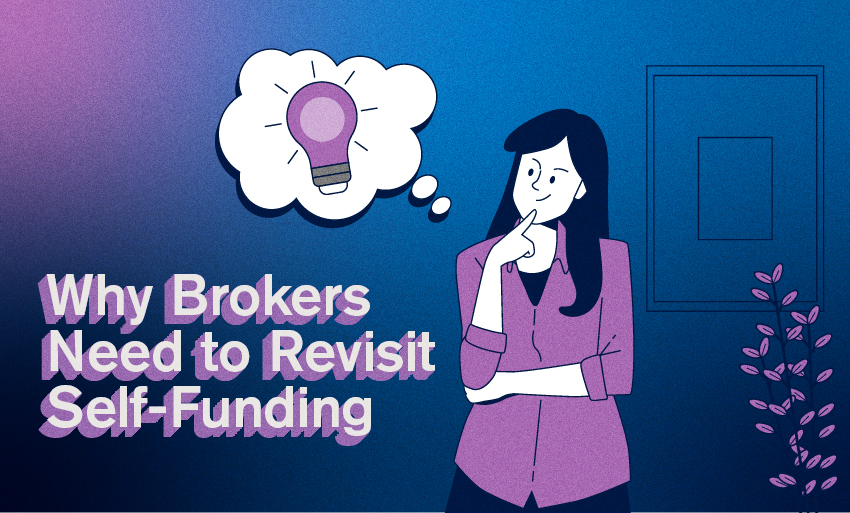Why Staying Fully Insured Could Be Costing You

The Risk Is in Doing Nothing
Why Staying Fully Insured Could Be Costing You
There’s a phrase I hear far too often in this industry about self-funding: “It’s not right for the group.” Sometimes it’s said with conviction. Other times, it’s said out of habit.
And then months or even years go by. The group sees year-over-year premium increases, but nothing changes. No strategies are implemented to control costs. No programs are introduced to help members get healthier. They stay locked in the same cycle of rising costs with no end in sight.
The challenge is breaking misconceptions about self-funding and giving brokers and employers the tools to feel confident in it.
Unlearning Biases About Self-Funding and Employee Benefits
When employers and intermediaries cling to fully insured, it’s often rooted in outdated assumptions. Yet today, self-funded health plans are becoming the norm, not the exception. According to a KFF employer health benefits survey, 63% of all workers covered by employer-sponsored health insurance were enrolled in a self-funded plan in 2024. Even in smaller firms, 36% of covered workers were in level-funded or self-funded arrangements that include stop-loss insurance.1
That level of adoption isn’t a coincidence. It’s driven by access to benefits administration tools, TPA (third-party administrator) support, and flexible plan design options. However, many brokers remain stuck in the “it’s not right for them” mindset, even as self-funding has become more and more accessible to employers.
The Hidden Risk of Staying in Fully Insured or ASO Models
Fully insured and ASO arrangements feel “safe” because they’re familiar, but the real risk is in staying put while premium costs increase and flexibility erodes. The hidden danger of the status quo is that it quietly drains resources. Every renewal in the wrong model chips away at margins, benefits quality, and long-term sustainability. The self-funding model is designed to be consistently fine-tuned based on member dynamics and employer goals. It’s a constant process of analyzing the data, implementing cost containment solutions to mitigate risk, and reassessing and evaluating. Fully insured plans, on the other hand, are dictated by carriers, with little to no flexibility.
Why Brokers and TPAs Need to Revisit the Self-Funding Conversation
I understand the frustration. As a broker or TPA, it’s easy to think, “I’ve explained the concept of self-funding for years and they’re just not ready,” and move on. But leadership changes, financial pressures mount, and a group that wasn’t ready for self-funded employee benefits three years ago may be in a different position today. It’s increasingly important to keep self-funding on the table, revisit it at renewal time, and present updated solutions backed by data and experience.
The Biggest Risk in Health Plan Strategy: Doing Nothing
This industry and healthcare in general are vastly different from what it was a decade ago, and the cost of doing nothing isn’t zero.
- It’s higher stop loss renewals.
- It’s less control over plan design.
- It’s missed opportunities for savings and better employee outcomes.
Every year an employer delays exploring self-funded health plans is a year of lost value that can’t be recovered. If you’re a broker, don’t let old objections keep you from offering new solutions. If you’re an employer, don’t let outdated fears stop you from exploring a better model.
The greatest risk in benefits today? Doing nothing.
1 https://www.kff.org/report-section/ehbs-2024-section-10-plan-funding/